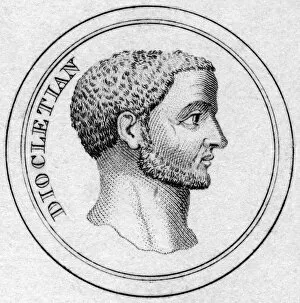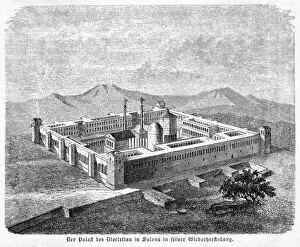Diocletian Collection (#5)
Diocletian, a name that echoes through time and history
All Professionally Made to Order for Quick Shipping
Diocletian, a name that echoes through time and history. From the stunning artwork of "The Young Martyr (La Jeune Martyre), 1855" to the majestic Twilight Diocletians Palace in Croatia's Split, his legacy is undeniable. St Vincent died in 304, a martyr under Diocletian's reign, reminding us of the persecution faced by early Christians. The Roman ruins within Diocletian's Palace stand as a testament to his power and influence. The cathedral tower rises proudly amidst this UNESCO World Heritage Site, while Roman tombstones with Christian iconography tell stories of faith and devotion. In Rome, we find traces of Diocletian's rule at the Baths and Maximian. Built between 298-306 AD with alleged involvement from 40, 000 slaves, these thermal complexes were once bustling centers for relaxation and indulgence. However, not all was grandeur during his reign. The Persecutions of Christians by Emperor Diocletian around 270 AD brought suffering to many believers. Saint Sebastian himself became a symbol of martyrdom during this era. As we explore historical Rome today, we encounter remnants like Vestigia Thermarum Diocletiani Ani Hodie Templem S. Mary Angelor - remains of the Baths destroyed by invading Goths in 537 AD. These sites serve as reminders that even great emperors like it can subject to the passage of time. From art depicting his era to architectural wonders bearing his name, there is no denying that Emperor Diocletian left an indelible mark on history. His story continues to captivate our imagination centuries later – an enigmatic figure whose actions shaped both ancient Rome and Christianity itself.
























